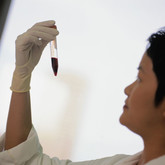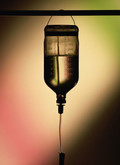Biosimilars
US supreme court ruling means biosimilars pathway safe
On 28 June 2012 the US Supreme Court ruled in favour of the bulk of the Affordable Care Act, meaning that the biosimilars pathway, which is part of the act, is now also safe.
Biosimilar infliximab equivalence proven in phase III trial
Results from a phase III trial of biosimilar infliximab have proven the equivalence of South Korean biotechnology company Celltrion’s biosimilar (CT-P13) and the reference product – Johnson & Johnson’s rheumatoid arthritis blockbuster Remicade (infliximab) in terms of safety and efficacy in patients with active rheumatoid arthritis [1].
Copaxone sees off generics challenge
Teva received a major boost in June 2012, after a US court backed the Israeli firm in a patent dispute concerning its multiple sclerosis blockbuster Copaxone (glatiramer acetate).
US$67 billion worth of biosimilar patents expiring before 2020
Last updated: 20 January 2014
Twelve biological products with global sales of more than US$67 billion will be exposed to biosimilar competition by 2020, with Enbrel (etanercept) whose US patent has been extended until 2028, scoring global sales of US$7.3 billion by December 2011; coming in second after Humira (adalimumab) with global sales of US$7.9 billion [1].
Phase I trial of biosimilar infliximab proves biosimilarity
Results from a phase I trial of biosimilar infliximab have proven the equivalence of South Korean biotechnology company Celltrion’s biosimilar (CT-P13) and the reference product – Johnson & Johnson’s rheumatoid arthritis blockbuster Remicade (infliximab) in terms of pharmacokinetic parameters, as well as in safety and efficacy in patients with active ankylosing spondylitis [1].
Small molecule versus biological drugs
Biological drugs are large and complex, often consisting of heterogeneous mixtures. They are generally made in genetically engineered cells that impose their own variabilities–in post-translation modifications such as glycosylation–on the processes used to make such drugs.
Amgen welcomes biosimilar monoclonal antibody guideline
In a statement issued on 18 June 2012, biologicals major Amgen announced that the company broadly supports the scientific principles behind the guideline on non-clinical and clinical aspects for biosimilar monoclonal antibodies recently issued by EMA [1]. The company added that the guideline aims at maintaining a high standard for approval of a biosimilar in the EU.
Trials of biosimilar monoclonal antibody prove biosimilarity
South Korean biotechnology company Celltrion presented the PLANET clinical studies results of phase I and phase III trials for its first monoclonal antibody biosimilar (CT-P13) of Johnson & Johnson’s rheumatoid arthritis blockbuster Remicade (infliximab) at the Annual Congress of the European League Against Rheumatism (EULAR) held in Berlin, Germany, on 6–9 June 2012. The results demonstrated the biosimilarity of CT-P13 to the reference drug, supporting the company’s intention to launch the biosimilar monoclonal antibody globally.
Successful phase III trial of biosimilar r-FSH
Finox Biotech announced on 6 June 2012 that the company’s pivotal phase III study with Afolia, a biosimilar recombinant follicle stimulating hormone (r-FSH), in patients undergoing assisted reproduction technology (ART), had met its primary endpoint.
Merck KGaA and Dr Reddy’s to collaborate on biosimilar mAbs
Pharma major Merck KGaA announced on 6 June 2012 its first steps into the biosimilars market, with an agreement with India-based generics manufacturer Dr Reddy’s Laboratories (Dr Reddy’s) to co-develop biosimilar cancer drugs.













